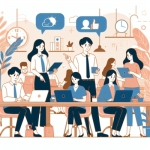Developing a Fresh and Vibrant Learning and Development Program
The success of any organisation, including NFPs and charities, relies on the knowledge, skills, and capabilities of its workforce. Investing in learning and development initiatives means your organisation can foster a culture of continuous growth, enhance employee satisfaction, and improve its ability to fulfill their purpose. It is essential to recognise that smaller and mid-sized NFPs and charities have specific requirements and constraints that must be considered when designing a learning and development program. Restricted use of funds, distinct social purposes and volunteer use are not typical of similar sized for-profit organisations and therefore need to be factored when designing your program.
Before developing a learning and development program, it is crucial to conduct a comprehensive assessment of the organisation's needs. This assessment should consider factors such as strategic goals, operational challenges, and the skills and competencies required for effective service delivery. A needs assessment may involve surveys, interviews, and data analysis to gain a holistic understanding of the organisation's learning requirements. Depending on the nature of your service this consultation process may also include your volunteers and members, and in some instances, this will involve your committee or board representatives.
Utilising a combination of these resources along with other internal and external resources will add value to your learning and development program. Internal resources include subject matter experts within the organisation who can share their knowledge and expertise. Additionally, fostering a culture of peer learning and mentorship among staff and volunteers can greatly contribute to the program's success. External resources, such as training providers, industry experts, and online learning platforms, can offer specialised knowledge and training opportunities.
The next step involves setting up a realistic budget and calendar of events. Avoid being too rigid if possible, learning and development is an ongoing process that should be regularly evaluated and refined. Learning and development does always have to be held in a classroom environment, it can involve a range of other activities spanning from conference attendance, work rotation to individual educational assignments.
Implementing mechanisms for feedback, such as surveys and performance evaluations, allows organisations to assess the effectiveness of the program and identify areas for improvement as the program rolls out. Regular review and adaptation ensure that the learning and development program remains relevant and aligned with the evolving needs of the organisation and its workforce.
NFPs and charities (particularly those with limited budgets) can benefit from collaborations and partnerships with other organisations and institutions. Sharing resources, knowledge, and best practices through partnerships can enhance the learning and development opportunities available to staff and volunteers. Collaboration can also lead to joint training initiatives, workshops, and conferences, promoting networking and knowledge exchange within the sector. Many peak bodies provide these services; however, it is useful to access a variety of learning professionals form different sectors to promote diversity in thought.
Successfully navigating the unique characteristics and constraints of the sector, tailoring the program to meet specific organisational needs, and leveraging both internal and external resources, organisations can enhance their capacity to deliver on your purpose. Continuous evaluation, collaboration, and partnerships further strengthen the learning and development initiatives will foster a culture of growth and excellence within your organisation. To keep your program fresh and vibrant don’t forget to stay flexible and think outside of the box, doing so will be sure to keep your team interested in learning and growing together.








